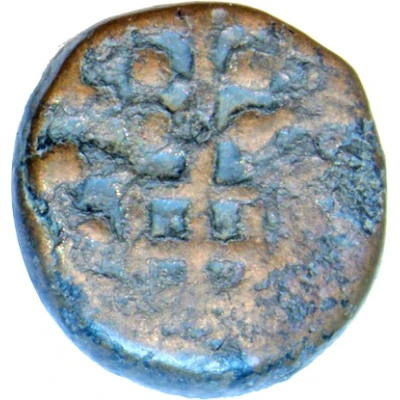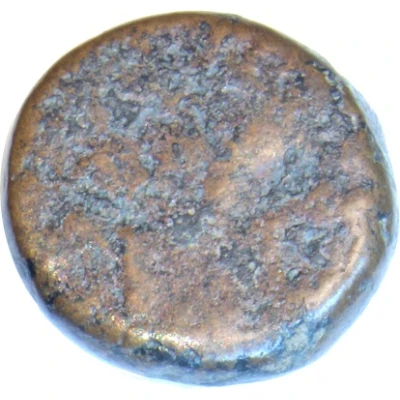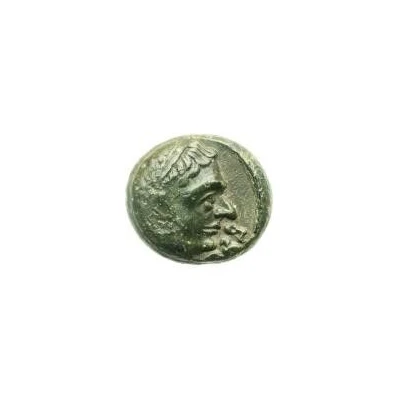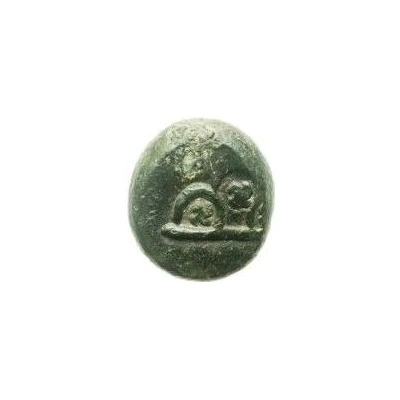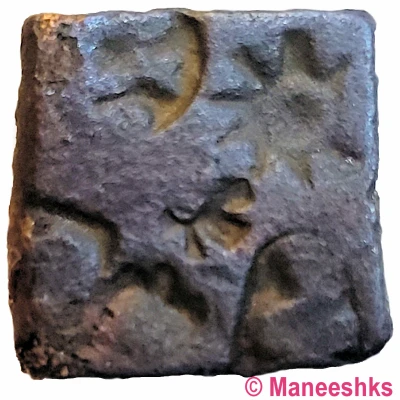
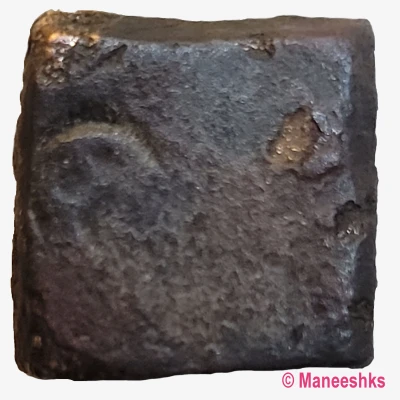

© Maneeshks (CC BY-NC)
Karshapana - Ujjain 200 BC
200 BC year| Copper | 2.24 g | - |
| Issuer | Ujjain region (Malwa Plateau) |
|---|---|
| Type | Standard circulation coin |
| Year | 200 BC |
| Composition | Copper |
| Weight | 2.24 g |
| Size | 14.7 mm |
| Thickness | 2.80 mm |
| Shape | Square (irregular) |
| Technique | Cut (Made from sheets of metal, cut to small sizes with symbols punched on to them) |
| Demonetized | Yes |
| Updated | 2024-10-10 |
| Numista | N#320172 |
|---|---|
| Rarity index | 84% |
Reverse
'Bale-mark'
Edge
Plain
Comment
The obverse of post Mauryan (200 BC onward) copper punch marked coin of Ujjain usually carry multiple symbols, the most common of which are the sun and a standing figure of Lord Shiva. The reverse carries a 'bale mark'.Ujjain was an important urban center of the Avanti region of Malwa. It was one of the Mahajanpadas, then became a part of the Mauryan empire and as the empire weakened post-Ashoka, regained its independence. These coins are from that period.
Typo-logically the Mauryan karshapana type became an important prototype on the way towards the 'Shiva type' of the local Ujjain coin series. While the Mauryan karshapan were issued in silver, these coins were produced in copper.
The size and weight will vary
Interesting fact
One interesting fact about the Karshapana - Ujjain coin is that it features a unique blend of ancient Indian and Greek architectural styles. The coin's design includes a depiction of a Greek-style temple, which is surrounded by intricate carvings of Indian floral motifs. This fusion of cultural influences reflects the rich cultural exchange that took place during the rule of the Mauryan Empire, which spanned across present-day India, Pakistan, and parts of Afghanistan.
